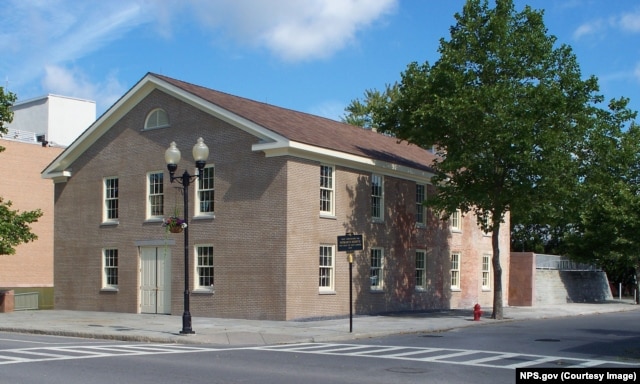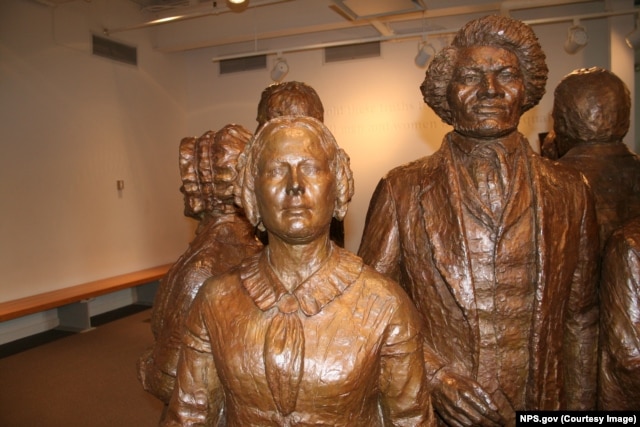
This year, the U.S. National Park Service turns 100.
American’s 28th President, Woodrow Wilson, formed the National Park Service in 1916 to “protect the wild and wonderful landscapes” in the United States. President Ulysses Grant established Yellowstone National Park as the country’s first national park in 1872.
Every month, VOA Learning English will feature some of the 407 parks and historical sites within the National Park Service. To celebrate International Women’s Day, we start our tour in Seneca Falls, a small city in the state of New York.
Seneca Falls is known as the birthplace of the women's rights movement in America. The town is home to the Women’s Rights National Historical Park. The park tells the story of the first Women’s Right Convention, held in Seneca Falls, in 1848.

On July 19 and 20 of 1848, 300 women and men gathered at the town’s Wesleyan Chapel for the Women’s Rights Convention. Among them was Elizabeth Cady Stanton. She was one of the early leaders of the women’s rights movement, and one of five women who organized the convention in Seneca Falls.
Leaders at the convention discussed the “social, civil and religious conditions and the rights of woman.” At the end of the two-day convention, 68 women and 32 men signed the Declaration of Sentiments, which Elizabeth Cady Stanton co-wrote.

The declaration stated, “we insist that they [women] have immediate admission to all the right and privileges which belong to them as citizens of these United States.” The declaration called for voting rights for women, among other demands.
In 1920 -- 72 years later -- the 19th amendment to the U.S. Constitution gave women the right to vote.
The meeting in Seneca Falls paved the way for the women’s rights movement in America. And the Women’s Rights National Historical Park honors its role in U.S. history.
The visitor’s center displays life-size statues of the five women who organized the first Women’s Rights Convention. Sculptor Lloyd Lillie created the statues. His work is called “The First Wave”.

Visitors to the Women’s Rights National Historical Park can go inside of Elizabeth Cady Stanton’s house. She lived in Seneca Falls from 1847 until 1862. She called her house there the “center of the rebellion.”
Visitors can also tour the Wesleyan Chapel, where the meeting took place 168 years ago. The chapel was built in 1843. Political rallies, free speech events, and antislavery activity often took place inside the church.
Seneca Falls is now also home to the National Women’s Hall of Fame. It was created in 1969. The National Women’s Hall of Fame is the oldest organization that recognizes and honors important American women.
More than 200 women have been named to the National Women’s Hall of Fame.

One of them is current U.S. presidential candidate and former Secretary of State Hillary Rodham Clinton. She became a member in 2005.
Clinton was the first female U.S. senator from New York State, and the first former First Lady elected to the U.S. Senate.
I’m Ashley Thompson.
Ashley Thompson wrote this report for VOA Learning English, with materials from NPS.gov. Hai Do was the editor.
Words in This Story
convention – n. a conference or meeting
landscape – n. an area of land that has a particular quality or appearance
pave the way for – expression (v). to make it easier for something to happen or for someone to do something
rally – n. a public meeting to support or oppose someone or something

